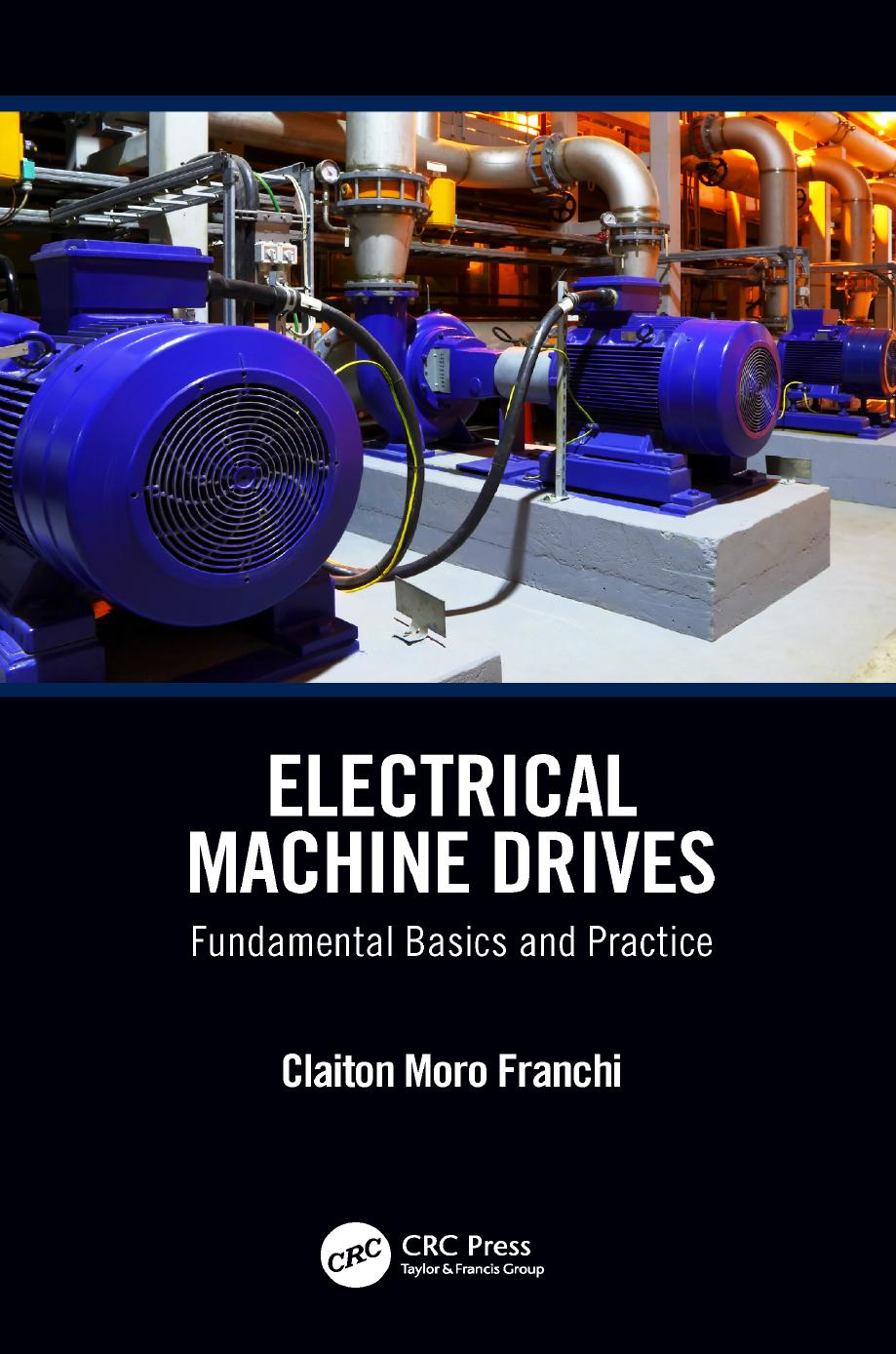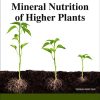Electrical Machine Drives Fundamental Basics and Practice 1st Edition by Claiton Moro Franchi 1138099392 978-1138099395
$70.00 Original price was: $70.00.$35.00Current price is: $35.00.
Instant download Electrical Machine Drives; Fundamental Basics and Practice Claiton Moro Franchi after payment
Electrical Machine Drives Fundamental Basics and Practice 1st Edition by Claiton Moro Franchi – Ebook PDF Instant Download/Delivery:1138099392, 978-1138099395

Product details:
ISBN 10: 1138099392
ISBN 13: 978-1138099395
Author: Claiton Moro Franchi
This work was developed based on the author’s experience of more than 10 years working in research and industry in the areas of electrical drives and industrial automation. Seeking the connection between theory and its applications, the author presents a detailed conceptual description with lots of figures and illustrative examples that harmonize the theoretical approach with the practice. Composed of eleven chapters and three appendices, the book describes in a dynamic and didactic way the fundamental concepts related to the drives of electric machines. At the end of each chapter is a set of exercises to ease the fixation of the presented content.
Table of contents:
1. Electric Motors
1.1 Electric Motors Types
1.1.1 Direct Current Motors
1.1.1.1 Series
1.1.1.2 Shunt Excited
1.1.1.3 Compound Excited
1.1.2 Alternating Current Induction Motors
1.1.2.1 Single-Phase Induction Motors
1.1.2.2 Types of Single-Phase Induction Motors
1.1.2.3 Three-Phase Electric Motor
1.2 Motor Selection
Exercises
2. Three-Phase Motors
2.1 Introduction
2.2 Three-Phase Induction Motor Construction
2.3 Faraday’s Law
2.4 Lenz’s Law
2.5 Operation Principle of a Three-Phase Induction Motor
2.6 Squirrel Cage Induction Motors Characteristics
2.6.1 Efficiency (η)
2.6.1.1 Motor Efficiency Based on Rated Power
2.6.1.2 Motor Efficiency in Function on the Shaft Load
2.6.2 Rated Speed
2.6.3 Slip
2.6.4 Torque Speed Design
2.6.5 Insulation Class
2.6.5.1 Temperature Rise
2.6.6 Motor Cooling
2.6.6.1 IC 01—Open Drip Proof (ODP)
2.6.6.2 IC 41—Totally Enclosed Fan-Cooled (TEFC)
2.6.6.3 IC 40—Totally Enclosed Non-Ventilated (TENV)
2.6.6.4 IC 418—Totally Enclosed Air Over (TEAO)
2.6.6.5 Special Applications Frames
2.6.7 Duty Cycle
2.6.8 Service Factor (SF)
2.6.9 Multiple Nominal Voltage and Frequency
2.6.10 Locked Rotor Current kVA Code Letter (CODE)
2.6.11 Speed Direction
2.6.12 Environmental Conditions
2.6.13 Degree of Protection (IP)
2.6.14 Frames
2.6.15 Mounting
2.6.16 Nameplate
Exercises
3. Electric Power
3.1 Real Power
3.2 Reactive Power
3.3 Apparent Power
3.4 Power Triangle
3.5 Power Factor
3.6 Electric Power Calculations Examples
3.7 Power Factor in Industry
3.8 Causes of Low Power Factor
3.9 Advantages of Power Factor Correction
3.10 Methods to Correct the Power Factor
3.11 Capacitors Parameters
3.12 Power Factor Correction Using Capacitors
3.12.1 Examples of Power Factor Correction
3.13 Location of Capacitors
3.14 Real Power in Three-Phase Motors
3.15 Power Factor in Induction Motors
3.16 Power Characteristics of a Three-Phase Motor
Exercises
4. Motor Starter Components
4.1 Push Buttons
4.2 Selector Switch
4.3 Limit Switches
4.4 Fuses
4.4.1 Short Circuit Definitions
4.4.2 Operation Classes
4.4.3 Types of Fuses (European)
4.4.3.1 D Type
4.4.3.2 Type NH Fuse
4.4.4 Sizing of Fuses
4.4.4.1 Sizing Example
4.4.5 Types of Fuses (US)
4.4.6 High Speed Fuses
4.4.7 Final Considerations about Fuses
4.5 Overload Relays
4.5.1 Characteristic Tripping Curve
4.5.1.1 Trip Class
4.5.2 Ambient Temperature Compensation
4.5.3 Forms of Operation
4.5.4 Sizing
4.5.5 Solid-State Overload Relays
4.6 Motor Protective Circuit Breakers
4.6.1 Advantages of Using Motor Protective Circuit Breakers
4.7 Contactors
4.7.1 Contactor Ratings
4.7.1.1 NEMA
4.7.1.2 IEC
4.7.2 Lifespan of Contactor
4.7.3 Suppression Modules
4.7.4 Main Features of Contactors
4.8 Auxiliary Relays
4.8.1 Time Relays
4.8.1.1 ON-Delay
4.8.1.2 OFF-Delay
4.8.1.3 Star-Triangle
4.8.2 Monitoring Relays
4.8.2.1 Phase Sequence
4.8.2.2 PTC Thermistor
4.8.2.3 Phase Loss
4.8.2.4 Undervoltage and Overvoltage
Exercises
5. Starting Methods of Induction Motors
5.1 Starting Current of Induction Motor
5.2 Basic Electrical Symbols
5.3 Typical Diagrams for Starting Induction Motors
5.3.1 Direct On Line Starter
5.3.1.1 Direct On Line Starter Diagram
5.3.1.2 Sizing Example
5.3.2 Jogging
5.3.3 Forward/Reverse Starter
5.3.4 Reduced Voltage Starters
5.3.4.1 Primary-Resistance Starting
5.3.4.2 Star-Triangle Starter
5.3.4.3 Autotransformer Starter
Exercises
6. Solid-State Starters: Soft Starter
6.1 Soft Starters
6.1.1 Operation Principle
6.1.1.1 Power Circuit
6.1.1.2 Control Circuit
6.2 Main Functions of Soft Starter
6.3 Parameters Description
6.3.1 Voltage Ramp in Acceleration
6.3.2 Voltage Ramp in Deceleration
6.3.3 Start Voltage Pulse (Kick Start)
6.3.4 Current Limitation
6.4 Protections
6.5 Save Energy
6.6 Output Functions
6.7 Input Functions
6.8 Methods of Starting a Motor with Soft Starter
6.8.1 Human Machine Interface
6.8.2 Inputs
6.8.3 Industrial Networks
6.9 Typical Soft Starter Circuits
6.9.1 Direct Connection
6.9.2 Using Digital Inputs
6.9.3 Inside Motor Delta Connection
6.9.4 Bypass Contactor
6.9.5 Multiples Motors Simultaneously
6.9.6 Sequential (Cascaded) Start of Different Motors
6.10 Number of Phase Control
6.10.1 Unbalance of Motor Currents in the Start
6.10.2 Impossibility to Make Inside Delta Connection
6.11 Torque Control
Exercises
7. Variable Frequency Drives
7.1 Fundamental Concepts
7.1.1 Force (F)
7.1.2 Speed (n)
7.1.3 Angular Speed (ω)
7.1.4 Torque
7.1.5 Linear Acceleration (la)
7.1.6 Rotational Acceleration (ra)
7.1.7 Power
7.1.8 Energy
7.1.9 Moment of Inertia (J)
7.2 Torque Relations in a Variable Frequency Driver
7.3 Variable Frequency Driver Components Blocks
7.3.1 Central Processing Unit
7.3.2 Human Machine Interface
7.3.3 Input and Output Interfaces
7.3.4 Power Stage
7.3.4.1 Control System
7.3.4.2 Inverter
7.3.5 Switching Control
7.4 Pulse Width Modulation
7.5 Variable Frequency Drives Types
7.5.1 Scalar Control
7.5.1.1 Scalar Control Characteristics
7.5.1.2 Final Considerations on Scalar VFDs
7.5.2 Vector Control
7.5.2.1 Principles of Direct Current Motor
7.5.2.2 Vector Control Principles
7.5.2.3 Open-Loop Vector Control (Sensorless)
7.5.2.4 Feedback Control
Exercises
8. Parameters Description of VFD
8.1 Data Input and Output Systems
8.2 Speed Control Forms in a VFD
8.2.1 HMI
8.2.2 Digital Inputs
8.2.2.1 Multispeed Function
8.2.2.2 Speed Control with Two Digital Inputs
8.2.3 Analogue Inputs
8.3 Relay Output Functions
8.4 VFD Input and Output Connections
8.5 Typical VFD Wiring Diagrams
8.6 Transferring Configuration Using Human Machine Interface
8.7 Application in Process Control
8.7.1 Open-Loop Control
8.7.2 Closed-Loop Control
8.8 VFD Functions
8.8.1 Types of Acceleration and Deceleration Ramps
8.8.2 Motor Overload Current
8.8.3 Maximum Output Current Limiting
8.8.4 Switching Frequency
8.8.5 Avoided Frequencies
8.8.6 Automatic Cycle
8.8.7 Manual Boost Torque (Compensation IxR)
8.8.8 V/F Curve Adjust
8.8.9 Braking
8.8.9.1 DC Injection Braking
8.8.9.2 Rheostatic Braking
8.8.9.3 Regenerative Braking
Exercises
9. VFD Protection and Installation
9.1 VFD Electric Protection
9.2 Built-In VFD Protections
9.2.1 AC and DC Under-Voltage
9.2.1.1 Grid Under-Voltage Fault
9.2.1.2 DC Bus Fault
9.2.1.3 AC and DC Overvoltage Protections
9.2.2 Overcurrent Protection
9.2.3 Earth Leakage Protection
9.2.4 Heat Sink Over-Temperature Protection
9.2.5 Motor Thermal Overload Protection
9.2.6 VFD Protections Overview
9.3 Fault and Diagnostic Information
9.4 VFD Installation
9.4.1 Power Supply
9.4.2 Variable Frequency Driver Cabling
9.4.3 Variable Frequency Drive Output Devices
9.4.3.1 Overload Relays
9.4.3.2 Load Reactor
9.4.4 Environmental Conditions of the Installation
9.4.5 Temperature Current Derating
9.4.6 Altitude Current Derating
9.5 Variable Frequency Drive Types of Connections
9.6 Motors in Parallel
9.7 Inside Delta Connection
9.8 Good Practices for Installing VFDs
9.9 Harmonics Generated by Variable Frequency Drives
9.9.1 Harmonic Definition
9.9.2 Harmonic Distortion Analysis
9.9.3 Total Harmonic Distortion (THD)
9.9.4 Effects of Harmonic Frequencies on Equipment
9.9.5 Selecting the Switching Frequency
9.9.6 High dv/dt Rates in Variable Frequency Drives
9.9.7 Protection of Motors against High Switching Frequency
9.9.8 Conclusions about High Switching Frequencies in Variable Frequency Drives
Exercises
10. Variable Frequency Drive Sizing and Applications
10.1 Variable Frequency Drive Sizing
10.2 Basic Procedure for VFD Selection
10.2.1 Motor Selection
10.3 Variable Frequency Drive Selection according to the Type of Load
10.4 Load Types
10.4.1 Load Torque Characteristics
10.5 Speed Range Selection
10.6 VFD Applications
10.6.1 Ventilation
10.6.2 Load Division (Master-Slave)
People also search:
electrical machine drives fundamental
electrical machines and drives pdf free download
electrical machines and drives fundamentals and advanced modelling pdf
electrical drives


